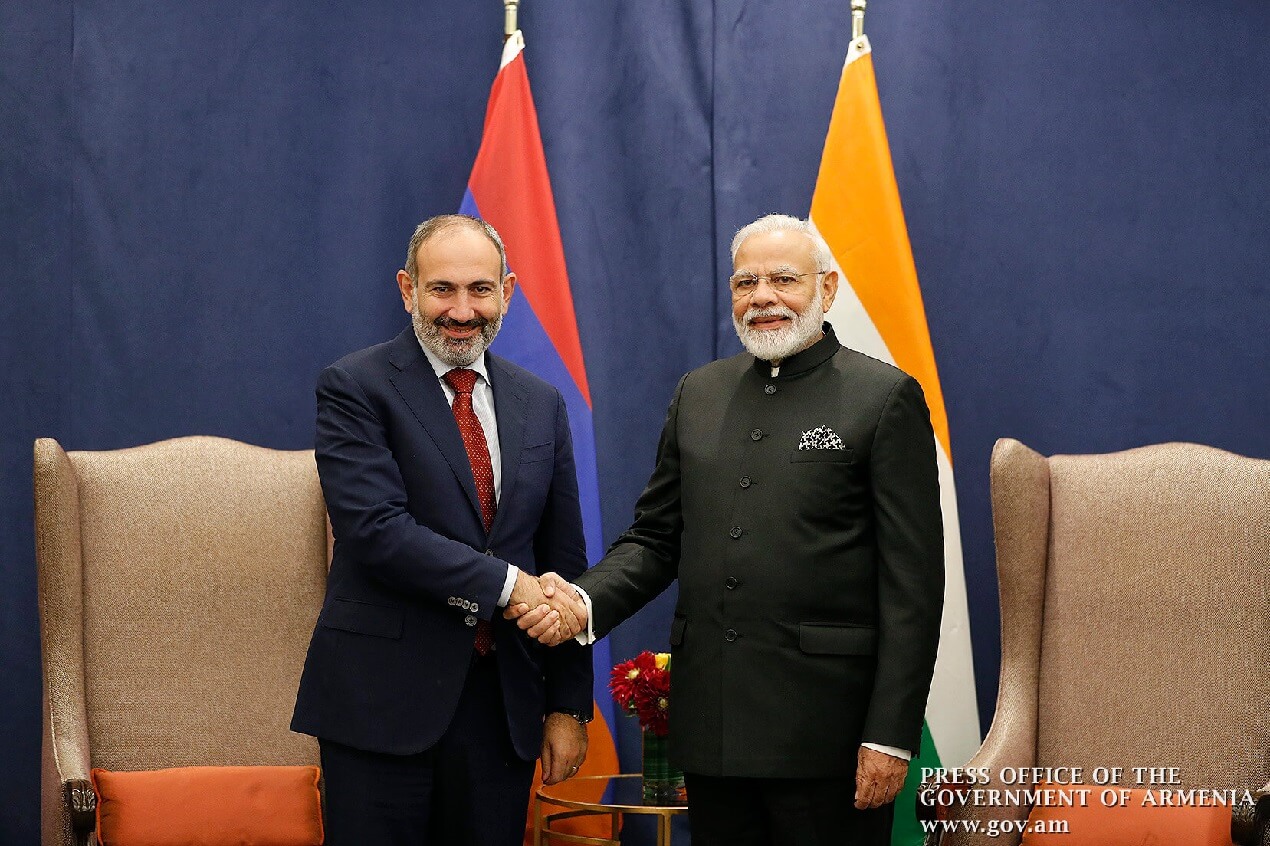Armenian forces are participating in the joint military drills with the United States. While the exercise hints at the new defense ties Yerevan is forging amidst souring relations with Moscow, the soldiers using Indian Helmet-Mounted Thermal Imaging Monoculars also indicate the new geostrategic alliance the Caucasian country has been forming.
Forget J-20, China’s H-20 Stealth Bomber Threatens ‘Easy Penetration’ Of LAC; How Can IAF Respond?
Armenia launched the military drills Eagle Partner with the US to increase interoperability in international peacekeeping missions. This is a significant departure from the country’s long-term reliance on Russia.
Armenian peacekeeping forces, servicemen of the US Army Europe and Africa, and the Kansas National Guard are participating in the drills.
The Armenian peacekeepers have been spotted in the thermal imaging devices developed by Tonbo Imaging, a Bangalore-based Indian defense manufacturer.
The drill, aimed at strengthening regional cooperation and military readiness, has seen Armenian forces equipped with the Tonbo Spartan-S, a next-generation Clip-On Thermal Weapon Sight (CLIPON).
Joint #Armenia–#US "EAGLE PARTNER 2024" military exercise, launched in #Yerevan, Armenia.
Servicemembers from the peacekeeping brigade of the Armed Forces of Armenia, the US Army of #Europe and #Africa, and the #Kansas National Guard will participate in the exercise. pic.twitter.com/oFvvrd53TE
— Jora (@TheScarmind) July 15, 2024
It is a multi-mission uncooled thermal imaging sight designed and optimized for small and medium caliber weapons as a true Clip-On. It also serves as a stand-alone sight, hand-held viewer, or helmet-mounted system.
Night vision technology has been a true game changer in military tactics and law enforcement. It revolutionized warfare, and being able to see in the infrared part of the spectrum makes military operations a 24-hour affair instead of dependent on daylight.
During the night, the enemy has time to hide, regroup, or run away. Thermal imagers add another dimension because the ability to see differences in heat means one doesn’t have to illuminate a subject with infrared light. Their own body or equipment heat gives them away.
Armenia’s military drills and new military gadgets come as it is decoupling from Russia. Armenia, once Russia’s main economic partner and ally since the 1991 Soviet disintegration, is exploring ties with other countries. It was part of a Moscow-led security alliance, the Collective Security Treaty Organization (CSTO), and even hosts a Russian military base.
As the rift with Russia is widening, Armenia froze its participation in the Russian-dominated security alliance, canceled its involvement in joint military drills, and snubbed the CSTO summits.
Armenia has been seeking to diversify its arms imports and find new allies after Russia failed to provide the country with ordered weapons worth around US $400 million.
Yerevan’s ties with India are fairly recent and stem from the country’s push to diversify its weapons acquisition. The Night Vision Thermal Imager is not the only military equipment Armenia has purchased from India. Armenia was the first international client to procure India’s Swathi weapon-locating radar system.
In 2020, the ex-Soviet republic bought four Indigenous Swathi weapons locating radars from India, which were delivered in the backdrop of its conflict with Azerbaijan.
The Swathi radars are jointly produced by the DRDO and Bharat Electronics Limited (BEL) at a cost of US $40 million. Swathi represents the latest generation of phased array or electronically steered radars to detect and direct counter-battery fire against enemy ordnance.
The strategic shift became pronounced as Armenia bought MArG 155 howitzers, Pinaka multi-barrel rocket launchers, and anti-tank munitions from India. The Pinaka export was also a first for India. The EurAsian Times had earlier reported that Armenia has contracted to buy India-developed Zen Anti-Drone System (ZADS).
Yerevan has also contracted for the Indian-built surface-to-air missile (SAM), Akash. With its ability to engage multiple targets and destroy maneuvering targets such as unmanned aerial vehicles (UAVs), cruise missiles, and missiles launched from choppers, Akash is ideally suited for Yerevan’s requirement to combat the Turkish armed drones deployed by Baku.
Akash Missile: Armenia Emerges Prime Contender As BDL Order Book Shows Export Order For Indian SAMs
This increasing defense cooperation is a strategic move for both countries. It enhances Armenia’s military capabilities while consolidating India’s role as an emerging defense exporter globally.

Burgeoning India-Armenia Defense Ties
Armenia has almost doubled its defense investments over the last year. In 2022, the spending was around US $700 million to US $800 million; now, in 2024, it will be US $1.4 billion or US $1.5 billion. The defense contracts with India alone account for a billion dollars.
Armenia is keen to modernize its military arsenal, primarily of Soviet and Russian origin. The country wants to learn how to upgrade Soviet and Russian equipment in its inventory and integrate it with the Western system.
The dialogue with India concerns not only procurement but also potential joint ventures for the local assembly of equipment and training facilities for Armenian officers.
India has kept most of the defense deals with the Caucasian country under wraps, but the news about them trickles in from the mandatory annual statements or the minutes of the meetings of the companies concerned. For instance, the news about Zen Technologies opening a branch office in Armenia came to light when the minutes of a board meeting held on October 28, 2023, were released.
While India has not publicly confirmed that it is supplying the Akash SAM system to Armenia, Bharat Dynamics Limited (BDL) did announce that it has received export orders from a friendly country.
- Ritu Sharma has been a journalist for over a decade, writing on defense, foreign affairs, and nuclear technology.
- The author can be reached at ritu.sharma (at) mail.com
- Follow EurAsian Times on Google News




